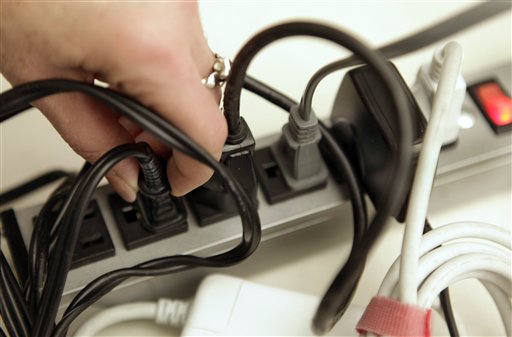EcoMyths: ‘Vampire Power’ sucks out your energy and money
By Kate Sackman

EcoMyths: ‘Vampire Power’ sucks out your energy and money
By Kate Sackman
No, “Vampire Power!” is not a rallying cry created by “Twi-hards” camping out at premier of The Twilight Saga: Breaking Dawn - Part 2. It’s not even a blood-red energy drink. But if you use electricity at home, vampire power is a phenomenon lurking in your household at this very minute.
According to energy expert, Eric Masanet, staff scientist at Lawrence Berkeley National Laboratory and associate professor of engineering at Northwestern University, vampire power is electricity loss by appliances in your house when they’re not being actively used. For our regular EcoMyths segment, Worldview’s Jerome McDonnell and I talked with Eric as he shared his passion for understanding energy demand and ways to reduce it.
At Northwestern, Eric teaches about energy and resource efficiency. His devotes his work to finding solutions to wasted energy. He explained a big source of energy waste is vampire power, also known as standby power, phantom load or plug load. Your household appliances that consume power when not in use include; your microwave oven, DVD, coffee maker, laptops, printers, televisions, and especially digital cable and satellite boxes. When turned off, many of these items remain in standby, ready for instant activation. Others continue to use power for their clocks (internal and external) or other displays. Actually, these items are never really “off” unless you unplug them. An average household has 40 appliances that use standby power when turned off. They unnecessarily consume up to 10% of total power used in your house! But also, energy lost through standby power accounts for 1 percent of all greenhouse gases in the atmosphere.
Other than unplugging offending vampire appliances from the socket, Eric suggests two practical ways to reduce standby loss. One is a power strip, a very simple solution for your home computer and related equipment. When you turn off your computer, if you also turn off the power strip, the whole suite of equipment will be fully off. Another solution is more long-term: buy Energy Star appliances. These ideas are pretty compelling to me. No one likes to pay an electricity bill, or any bill, for something they don’t actually use. So I am thinking of creating a vampire power rallying cry of my own: “Save energy, save money, save our atmosphere”!
See how we bust the vampire power myth at EcoMyths Alliance. Lawrence Berkeley National Laboratory has more info on standby power.